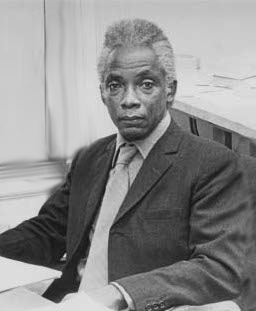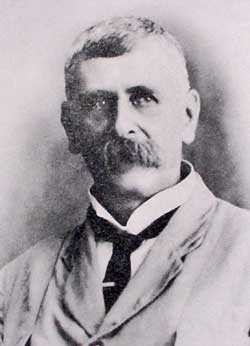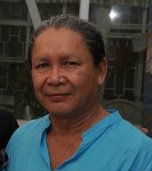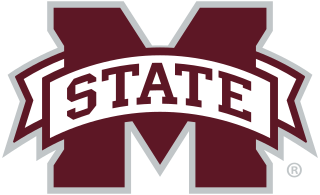
Georgetown is the capital and largest city of Guyana. It is situated in Demerara-Mahaica, region 4, on the Atlantic Ocean coast, at the mouth of the Demerara River. It is nicknamed the "Garden City of the Caribbean." It is the retail, administrative, and financial services centre of the country, and the city accounts for a large portion of Guyana's GDP. The city recorded a population of 118,363 in the 2012 census.

The University of Pennsylvania Museum of Archaeology and Anthropology—commonly known as the Penn Museum—is an archaeology and anthropology museum at the University of Pennsylvania. It is located on Penn's campus in the University City neighborhood of Philadelphia, at the intersection of 33rd and South Streets. Housing over 1.3 million artifacts, the museum features one of the most comprehensive collections of middle and near-eastern art in the world.

The Florida Museum of Natural History (FLMNH) is Florida's official state-sponsored and chartered natural-history museum. Its main facilities are located at 3215 Hull Road on the campus of the University of Florida in Gainesville.

The Bureau of American Ethnology was established in 1879 by an act of Congress for the purpose of transferring archives, records and materials relating to the Indians of North America from the Interior Department to the Smithsonian Institution. But from the start, the bureau's visionary founding director, John Wesley Powell, promoted a broader mission: "to organize anthropologic research in America." Under Powell, the bureau organized research-intensive multi-year projects; sponsored ethnographic, archaeological and linguistic field research; initiated publications series ; and promoted the fledgling discipline of anthropology. It prepared exhibits for expositions and collected anthropological artifacts for the Smithsonian United States National Museum. In addition, the BAE was the official repository of documents concerning American Indians collected by the various US geological surveys, especially the Geographical and Geological Survey of the Rocky Mountain Region and the Geological Survey of the Territories. It developed a manuscript repository, library and illustrations section that included photographic work and the collection of photographs.
Guyanese literature covers works including novels, poetry, plays and others written by people born or strongly-affiliated with Guyana. Formerly British Guiana, British language and style has an enduring impact on the writings from Guyana, which are done in English language and utilizing Guyanese Creole. Emigration has contributed to a large body of work relating the Guyanese diaspora experience.

The Peabody Museum of Archaeology and Ethnology is a museum affiliated with Harvard University in Cambridge, Massachusetts. Founded in 1866, the Peabody Museum is one of the oldest and largest museums focusing on anthropological material, with particular focus on the ethnography and archaeology of the Americas. The museum is caretaker to over 1.2 million objects, some 900 feet (270 m) of documents, 2,000 maps and site plans, and approximately 500,000 photographs. The museum is located at Divinity Avenue on the Harvard University campus. The museum is one of the four Harvard Museums of Science and Culture open to the public.

Georgetown City Hall is a nineteenth-century Gothic Revival building located on the corner of Regent Street and Avenue of the Republic in Georgetown, Guyana. The building was designed by architect Reverend Ignatius Scoles in 1887, and was completed in June 1889. The building houses the offices of the Mayor, the City Council, and the City Engineer.
Jan Rynveld Carew was a Guyana-born novelist, playwright, poet and educator, who lived at various times in The Netherlands, Mexico, England, France, Spain, Ghana, Jamaica, Canada and the United States.

Denis Williams was a Guyanese painter, author and archaeologist.

Guyana National Museum is a museum in Georgetown, Demerara-Mahaica, Guyana. It was established on 13 February 1868. The idea of starting a museum was conceived by members of the Royal Agricultural and Commercial Society (RACS) of British Guiana. When RACS was established in 1844, one of its aims was to construct a Museum to house local minerals, soils, timbers, fruits, seeds, gums, resins, dyes and drugs, as well as the flora and fauna of the country. British explorer Robert Schomburgk, the German botanist Carl Ferdinand Appun, Mr Bratt, and W.H. Campbell presented gifts to the RACS in order to start a Museum Collection. A fire in 1864 destroyed the donated collections.

Walter Edmund Roth was a British colonial administrator, anthropologist and medical practitioner, who worked in Queensland, Australia and British Guiana between 1898 and 1928.
The Lowell D. Holmes Museum of Anthropology began in 1966 as the Museum of Man, at the bequest and initiation of Dr. Lowell Holmes, Professor of Anthropology at Wichita State University in Wichita, Kansas, United States. Over the next 33 years it grew slowly and became known throughout the campus as a small but interesting museum. The collections and exhibitions include cultural items from around the world and archaeological objects predominantly from the American Midwest and Southwest. In 1999, the anthropology department and the museum moved to a new location in Neff Hall. The museum was expanded and Mr. Jerry Martin was hired as Director. This was the first time that the museum had a professional director whose only job was to work with, and develop the museum.
The National Library of Guyana is the legal deposit and copyright library for Guyana. Unlike many national libraries, it is also a public lending library and the headquarters of Guyana's public library service, with branches extending throughout the country. Founded in 1909, the National Library of Guyana is situated on the corner of Church Street and Main Street in central Georgetown. In 2007, the library recorded a collection of 397,893 books and a total of 22,058 members. Its collection includes the papers of A. J. Seymour and Ian McDonald.

The National Anthropological Archives is a collection of historical and contemporary documents maintained by the Smithsonian Institution, which document the history of anthropology and the world's peoples and cultures. It is located in the Smithsonian's Museum Support Center in Suitland, Maryland, and is part of the Department of Anthropology at the National Museum of Natural History.

The Robert S. Peabody Institute of Archaeology, formerly known as the Robert S. Peabody Museum of Archaeology, is a learning center and archaeological collection in Andover, Massachusetts. Founded in 1901 through a bequest from Robert Singleton Peabody, an 1857 Phillips Academy alumnus, the institute initially held the archaeological materials collected by Peabody from Native American cultures. Peabody's passionate interest in archaeology led him to create the institute at Phillips Academy to encourage young people's interest in the sciences, and to foster respect and appreciation for the Native American peoples who have inhabited that hemisphere for thousands of years.

George Simon was a Guyanese Lokono Arawak artist and archaeologist. He was the founder and mentor of the Lokono Artists Group, a group of Lokono artists from Guyana, based primarily in Simon's hometown of St. Cuthbert's Mission. Simon was widely regarded as one of the leading Guyanese artists of his generation, and his paintings are notable for their explorations of Amerindian culture and the Guyanese environment. He was also recognized for his achievements as an educator, his efforts to develop opportunities for Amerindian artists in Guyana, and for his work as an archaeologist.
John Peter Bennett was a Guyanese priest and linguist. A Lokono, in 1949, he was the first Amerindian in Guyana to be ordained as an Anglican priest and canon. His linguistic work centred on preserving his native Arawak language and other Amerindian languages; he wrote An Arawak-English Dictionary (1989).

The Cobb Institute of Archaeology is a research and service unit of the College of Arts and Sciences at Mississippi State University (MSU). It was established in 1971 with a goal of promoting archaeological research and education at Mississippi State University. The Lois Dowdle Cobb Museum of Archaeology and its artifact collections are included in the Institute's facilities, and many of the Institute's staff serve as teaching faculty while having formal cross-affiliations with the Department of Anthropology and Middle Eastern Cultures. The Institute's archaeological research projects cover a wide geographic and temporal range, but focus on the cultures of the Near East and the Southeastern United States. Through collaboration with academic departments on campus, the Institute offers a wide range of opportunities for undergraduate and graduate students at Mississippi State University to engage in archaeological-related research and learning activities.
Cummingsburg, or historically Cumingsburg, is a ward in Georgetown, Guyana. It began as 500-acre plantation, La Bourgade about 1759. When Thomas Cumming, a Scotsman, bought the property, he developed a town plan with residential and commercial lots and streets. The town layout was modified after a fire that burnt much of the town in 1864. Today, it is the site of several museums, including a national and anthropological museum.
Clive Youlande Thomas is a Guyanese economics professor and political activist. He publishes on issues relating to development and poverty eradication in Guyana and the greater Caribbean region.














